











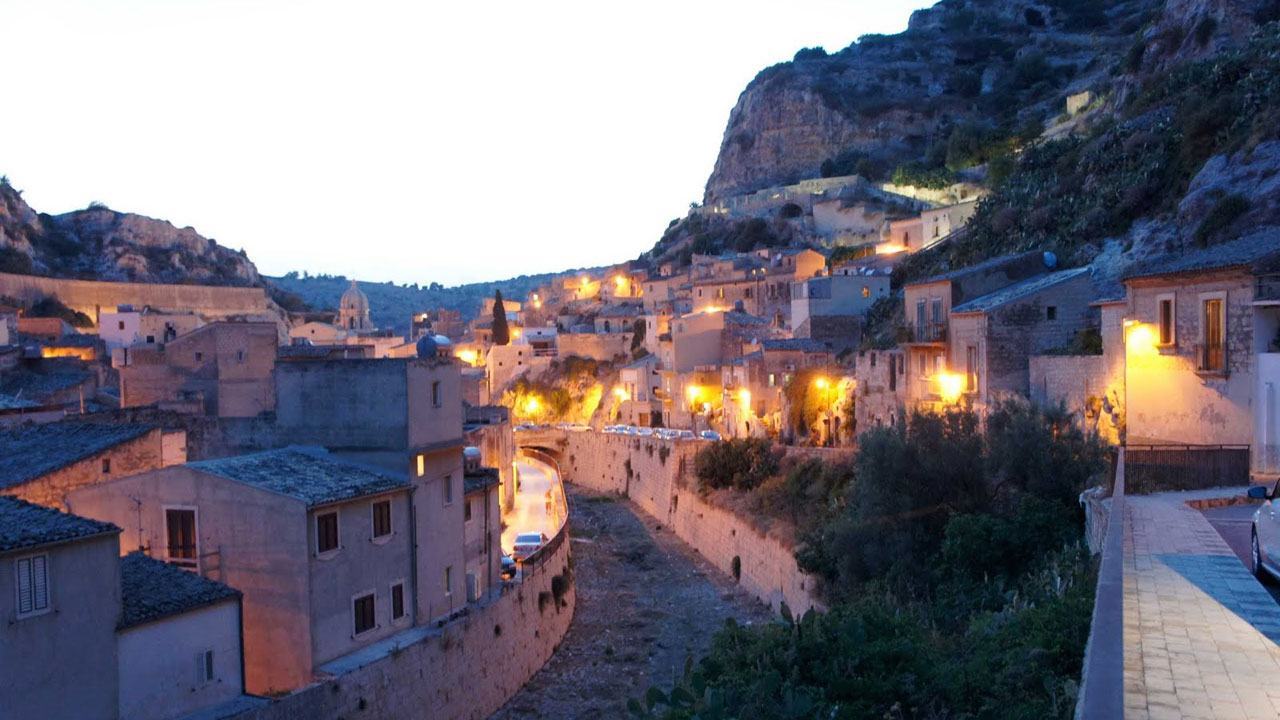














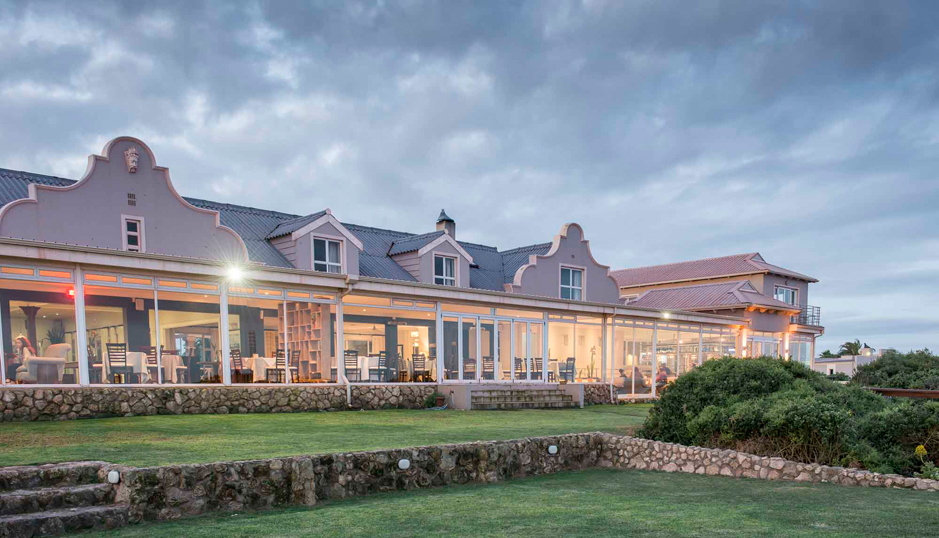







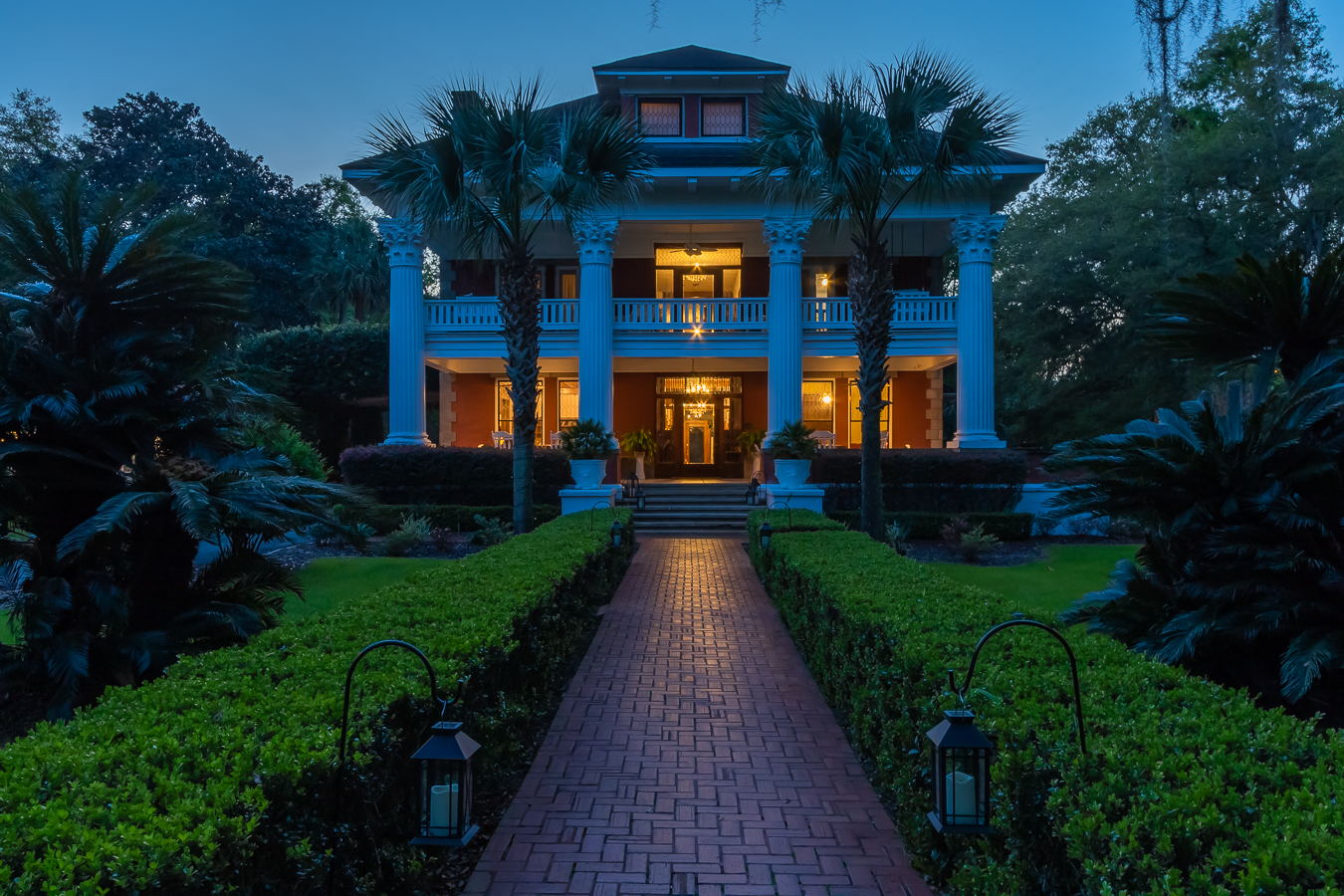




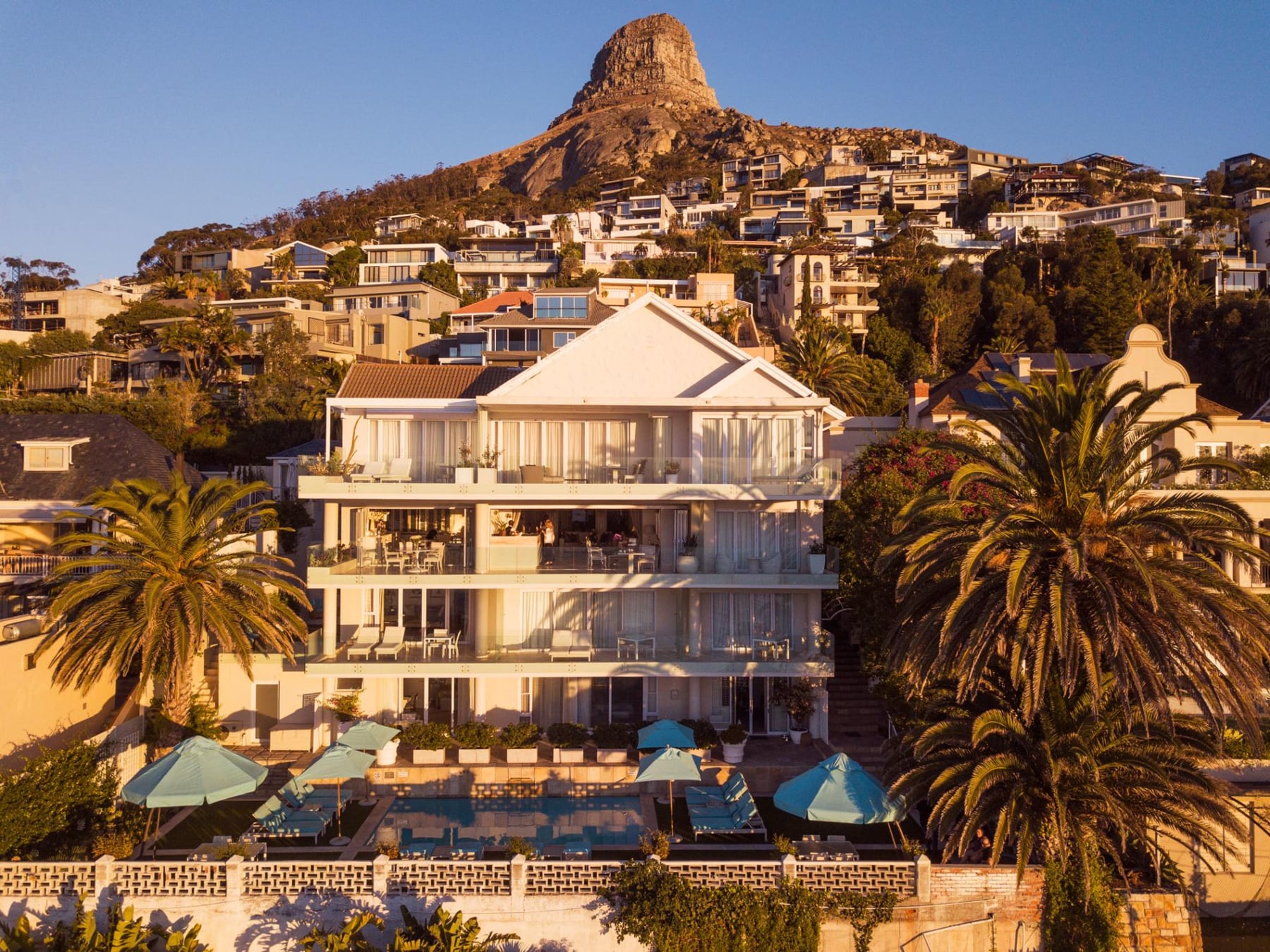

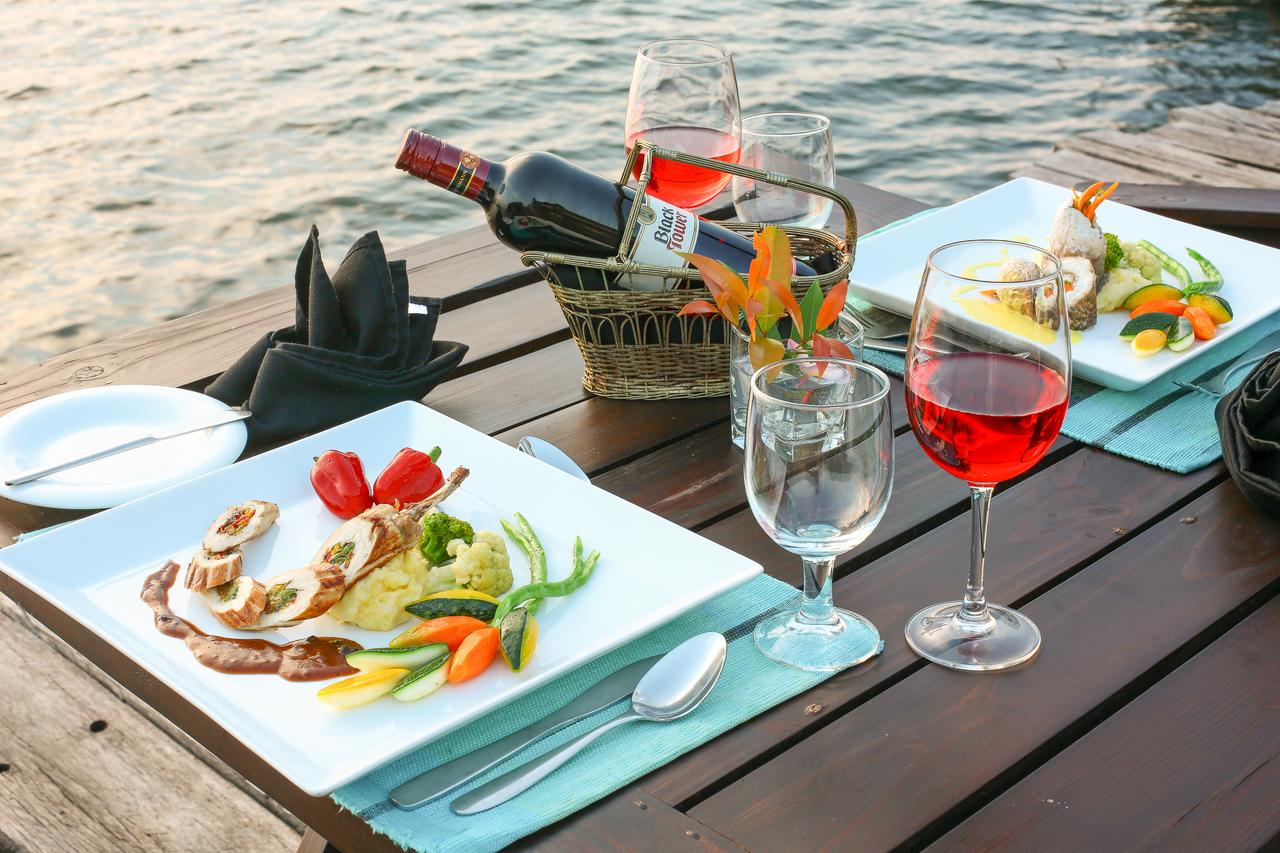

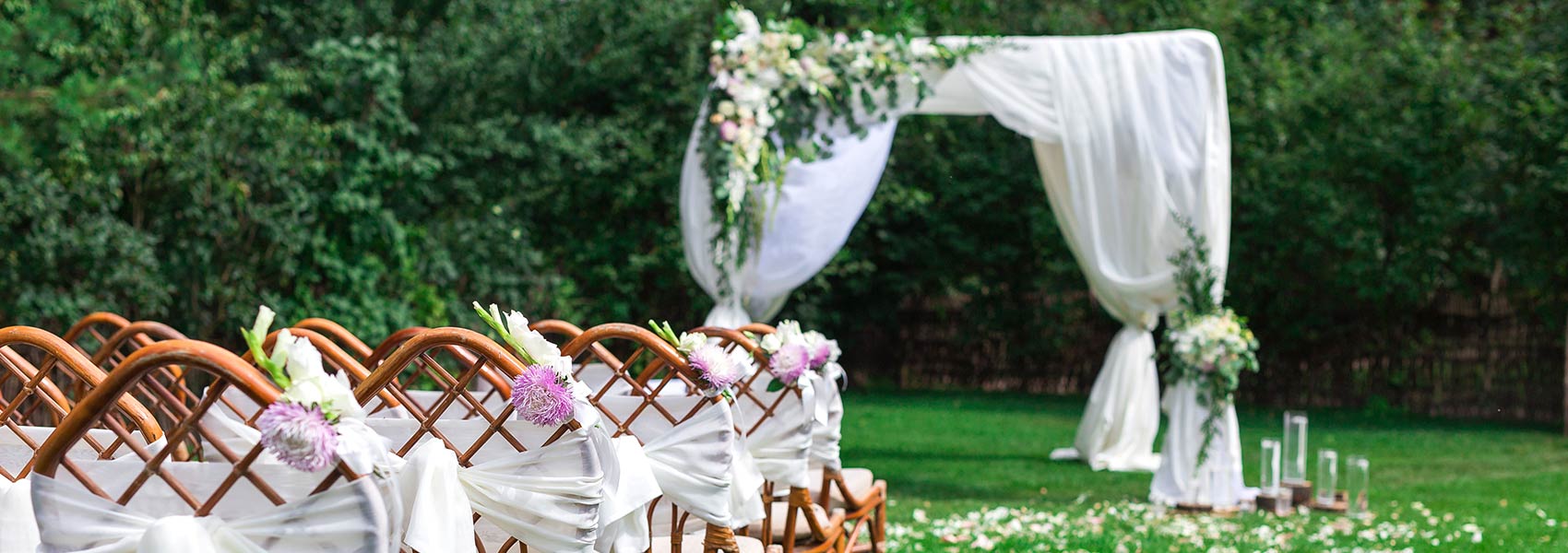











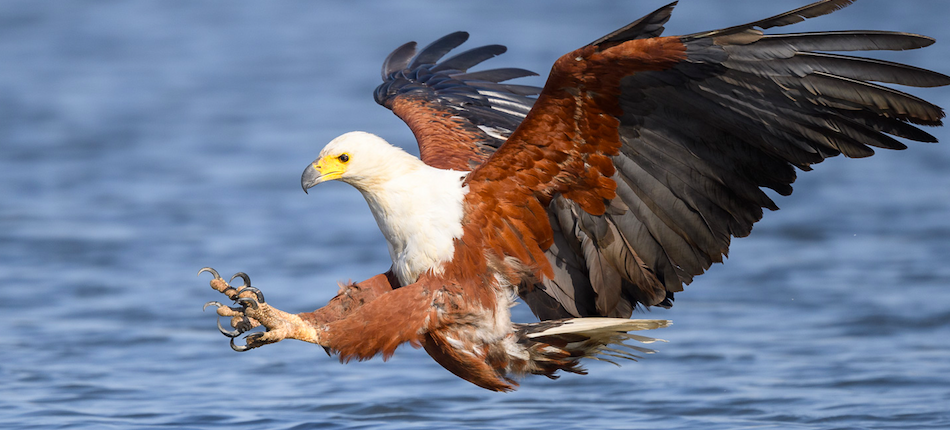















Asking price: 6,500,000 ZAR
Approx: 365, 305 USD
Oudtshoorn, Western Cape, South Africa
About us
A little bit more info: our Guest House is situated in the centre of historic Oudtshoorn and captures all the character and heritage of a bygone era, the ostrich feather boom.
This charming Victorian home is one of the oldest houses in Oudtshoorn dating back to 1853. It was declared a National Monument in 1988. The main road actually narrows close to the Guest House to preserve the last remaining piece of the original open water lead-lined furrow, which ran through Oudtshoorn in the old days.
The Guest House is sheltered under Oak trees in the centre of Oudtshoorn, on the main tourist route.
Our Guest House is within walking distance from the town centre and well-known restaurants to enjoy local wines and delicious ostrich steaks.
Our Guest House has 6 spacious en-suite bedrooms, individually, remote-controlled air-conditioned, satellite flat panel TV, hairdryers, coffee/tea trays, safe in room, WiFi, electric blankets in winter and other amenities to make your stay a pleasant one.
Newly designed lush garden and swimming pool to enjoy Oudtshoorn's sunny days.
Breakfast is served in the 'plaaskombuis' or outside on the patio facing the garden. Safe under cover parking on the premises.
Location
Our Guest House is near the town centre and within walking distance from shops and restaurants. Nearby Oudtshoorn attractions and activities include the Cango Caves, ostrich show farms, Wilgewandel Holiday Farm, Cango Wildlife Ranch, Meerkat adventures, the Swartberg Pass as well as the Swartberg Circle Route.
Oudtshoorn Activities
With over 330 sunshine days a year, Oudtshoorn is a great place for outdoor activities. Surrounded by mountain ranges and blessed with a rich variety of bird and plant life the Klein Karoo reveals it’s beauty to those who get out and make the effort to explore.
Cango Caves
Situated in a limestone ridge, only 29km from Oudtshoorn, this spectacular underground wonder boasts the finest drip-stone caverns, with vast halls and towering formations. All tours are lead by experienced, knowledgeable & accredited Caves Guides.
Swartberg Circle Route
The Swartberg Circle Route is a scenic and interesting drive. Travel from Oudtshoorn or Calitzdorp to De Rust, Klaarstroom and Prince Albert, over Swartberg Pass and through Meiringspoort. The trip may be started at any of the four towns and traveled in either a clockwise or anti-clockwise direction.
Cango Caves Zipline
Only 1km from the Cango Caves, this is a fun-packed activity for the whole family. Enjoy this unique & thrilling way to take in the beautiful Karoo views. Our deli offers some of the world’s best coffees, local cheeses & wine inside the air-conditioned interior or on the rooftop with its breathtaking views.
Cango Wildlife Ranch
Open year-round, this multi-accredited conservation destination has over 90 species of animals. Meet ambassador animals and even take a dip in the World’s 1st Croc-Cage Dive! Enjoy informative guided tours and fuel-up at the restaurants. Lots to see and do for all ages!
Karusa Vineyards
Wine tasting, craft beers & delectable tapas await you at Karusa. Enjoy tasting our unique wines in our intimate, rustically styled tasting room that leads out to our winegarden. Be sure to also sample our craft beers and Karoo-style tapas made from the freshest ingredients in the Little Karoo.
CP Nel Museum
Ostrich feather farming brought great prosperity to the Klein Karoo in the late 19th century. A legacy from this economic “boom” is the sandstone architecture of the so-called ostrich feather manors. The Museum represents some of the finest sandstone architecture in the Little Karoo.
Ostrich Show Farms
Certainly dubbed the ostrich capital of the world with good reason! Oudtshoorn offers ample opportunity to interact with the largest living bird on the planet, whether you prefer an ostrich show farm or working ostrich farm experience. These exciting, interactive tours are sure to inform and delight visitors.
Meerkat Tours
Seeing these shy little critters in their natural habitat is a unique privilege. Our experienced guide will meet you before sunrise, from where you’ll depart to the conservation area. Enjoy a hot cuppa before taking a short hike to the burrows, where you’ll observe the meerkats waking up, foraging in the sunshine and going about their daily routine.
Meiringspoort Waterfall
This inviting oasis is a favourite stop for visitors to the beautiful Klein Karoo. Situated in the exquisite Meiringspoort Pass, it forms part of a UNESCO World Heritage Site. Enjoy the picnic area, cool waters of the pool, thundering fall and delightful rainbows, all free of charge.
Oudsthoorn
Oudtshoorn (/ˈaʊtshɔːrn/, Afrikaans pronunciation: [ˈəutsˌɦuərən]) is a town in the Western Cape province of South Africa, located between the Swartberg mountains to the north and the Outeniqua Mountains to the south. Dubbed the "ostrich capital of the world", Oudtshoorn is known for its ostrich-feather booms, during 1865–1870 and 1900–1914. With approximately 60,000 inhabitants, it is the largest town in the Klein Karoo region. The town's economy is primarily reliant on the ostrich farming and tourism industries. Oudtshoorn is home to the world's largest ostrich population, with a number of specialised ostrich breeding farms, such as the Safari Show Farm and the Highgate Ostrich Show Farm, as stated by Pierre D. Toit.
Bhongolethu is a township 10 km (6 mi) east of Oudtshoorn. Derived from Xhosa, its name means "our pride".
History
Settlement
The pioneer farmers in the area that would be known as Oudtshoorn arrived in the 1750s, and became well-established in the area by the end of the 18th century. In addition to rearing livestock, they cultivated wheat and barley, made wine and brandy, and grew tobacco as well as a variety of soft fruit. As market opportunities in neighbouring districts such as George and Mossel Bay developed, the economic benefit of mixed farming came to be understood and utilized.
Initially, the pioneer farmers in the area fell under the administrative and legal sphere of Swellendam, but in fact George was the closest that inhabitants had to government headquarters. By the 1820s, the increasing population along the Olifants River and in the valleys of its tributaries increased the need for more local administrative and especially judicial supervision; especially the 1809 Hottentot Proclamation increased the legal and administrative burdens on slave owners. For these reasons, with its founding in April 1811, the magisterial district of George subsumed Oudtshoorn.
In the 1810s, due to the obstacles south and west of the area, trade contacts with developing towns to the east and north of Oudtshoorn unfolded instead. By the 1830s, the settlers' subsistence farming had transformed into a market economy, laying the foundation for further socio-economic development.
Founding
Farmer Cornelis P. Rademeyer was persuaded by residents in 1838 to make some of his farmland along the Hartebees River available for the construction of the first church in the area. On Sunday, 3 November 1839, the new Dutch Reformed church was inaugurated. For the next 40 years, it formed the center of congregational life in the area. Oudtshoorn gradually grew around this church. During September 1847, following the "urgent wishes of [his] neighbors", C.P. Rademeyer requested permission from the Cape government to turn his farm, Hartebees River, into a town, which he would name after Baron Pieter van Rheede van Oudtshoorn.
On 12 August 1847, it was announced in the Government Gazette that a number of wet and dry plots from the Hartebees River would be auctioned on 15 November of that year. The terms of sale stipulated that each plot owner or resident could use 1/500 of the water in the Grobbelaars River, and reserved certain preferential rights in this respect for the original owners.
However, the title deed issued to Rademeyer on 8 March 1832 had included the following servitude: "irrigation shall be effected by the river called Grobbelaars River." This servitude effectively excluded the entire would-be town from the use of the river's water. Rademeyer successfully applied to the government to have the servitude struck. Civil commissioner Aspeling van George recommended that the original servitude be amended so that water from the river could be led across the farm Grobbelaars River to Hartebees River for irrigation purposes.
In 1848, Oudtshoorn was officially founded.
Development
The founding of Oudtshoorn provided a central service area situated between the Swart and Outeniqua mountains, and by the time that the first resident magistrate, Colonel A.B. Armstrong, arrived in 1855, the settlement had spread over a mile and a half.
It was not until December 1847 that a Thomas Harris started the first state-supported "Farmers' School" next to the Grobbelaars River. Prior to that, even the most prosperous inhabitants employed private tutors, the use of which was forced upon them by the poor state of the roads in the region at the time, the costs of accommodation, as well as the continuing lack of farm workers. Private tutors solved the problem of transport and accommodation, and allowed the children to continue to help with farm work.
In 1853, the Dutch Reformed church was officially established as a kerkplaats (church farm).
Oudtshoorn was proclaimed as its own, separate magisterial district in 1858. In that same year, the first British settlers settled in the area.
The settlement's growth was constrained by the limited supply of water in the area. In the early years, water was transported to the town in barrels, which were sold for sixpence per bucket. Forced to cope with the lack of water, many of South Africa's earliest irrigation experts hailed from the region. The local economy came to be based primarily upon tobacco and ostrich farming. A severe drought in 1865 persuaded many of the settlers to move to the Transvaal. The 1865 census indicated that Oudtshoorn had a population of 1,145.
Ostrich farming
First Ostrich Boom
Oudtshoorn's ostrich industry dates back to 1864. The main reason for the surge in Oudtshoorn's prosperity was the ostrich, whose feathers had become fashionable accessories among European nobility. Feather exports saw a sharp increase from the Cape Colony during the mid-1860s, which is generally accepted as the launch of the industry in South Africa. By 1870, feather auctions were being held in Mossel Bay. In 1875, the census counted the town's population to be 1,837. Between 1875 and 1880, ostrich prices reached up to GBP 1,000 a pair. The value of ostrich feathers, per pound, equaled almost that of diamonds. The farmers of the region, realising that ostriches were far more profitable than any other activity, ripped out their other crops and planted lucerne, which was used as feed for the ostriches. By 1877, feather auctions were also being held in Oudtshoorn itself. The rising wealth also finally allowed for the completion of the Dutch Reformed Church, which was opened on 7 June 1879. Such was the worth of the white ostrich feather, that it was dubbed "white gold".
Owing to overproduction, the ostrich industry experienced a sudden slump in fortunes in 1885; the town's misery was compounded when it was hit by severe flooding during the same year, which washed away the nearby Victoria Bridge, which had been built over the Olifants River only the year before.
The boom had attracted a large Jewish immigrant population of about 100 families, most of them Lithuanians from the towns of Kelme and Shavel, who were fleeing from the Tsarist pogroms. As a result, Oudtshoorn came to be known as "the Jerusalem of Africa". Two synagogues were built, the first in 1888 and the second in 1896, and the first South African Hebrew school was established in Oudtshoorn in 1904. In 1891, Oudtshoorn's population had grown to 4,386 persons.
Second Ostrich Boom
The ostrich industry recovered slowly, owing in part to the Second Anglo-Boer War of 1899 to 1902. Boer forces under Commandant Gideon Scheepers were sighted near Oudtshoorn on 25 August 1901, but moved on because the town was well defended. A second and bigger boom started after the war. It was during this period that "feather barons", ostrich farmers who had become rich, built most of Oudtshoorn's famously opulent "feather palaces", their houses, most of them on the west bank of the Grobbelaars River. The town grew even more, and in 1904 it claimed 8,849 residents in the census. This boom peaked in 1913, during which year the highest-quality feathers cost more than $32 a pound in 2012 prices. Ostrich feathers were outranked only by gold, diamonds and wool among South African exports before World War I. The market collapsed in 1914, according to The Chicago Tribune, as a result of "the start of World War I, overproduction and the popularity of open-topped cars, which made ostrich-feather hats impractical." 80% of the ostrich farmers were bankrupted, and the ostriches were set loose or slaughtered for biltong. Domesticated ostriches numbered 314,000 at the end of World War I, but had plummeted to 32,000 by 1930. The Jewish population of Oudtshoorn fell from 1,073 in 1918 to 555 in 1936, and only continued to dwindle.
For 40 years, Oudtshoorn had been the most important settlement east of Cape Town.
The successful agriculture pursuits in the area necessitated an extensive and economically significant train system, which was developed in the 1930s. Despite the periodic irreparability of the Cradock Pass and Attakwaskloof in the Outeniqua Mountains, a reputable trade developed between the inhabitants north and south of the range. There was also trade with Cape Town, but its scope is uncertain; in any case, the poor state of the passes Attakwaskloof and Caledonkloof, through the transverse mountains on either side of the Gamka River, had a disruptive effect on trade with Cape Town.
Recent history
The end of World War II opened new markets for ostrich leather and meat, and as a result the industry eventually recovered.
In the 1940s, two justices of the peace, Ludolph Niepoth Jr. and John O'Connell, were appointed for the Olifants and Grobbelaars rivers, respectively. However, this only relieved the most pressing judicial concerns, and the government was consequently forced to create a local government authority.
The production of specialised agricultural seed is the biggest contributor to the region's wealth today, but ostrich farming remains an important business.
Bird flu
Through late 2004 to late 2005, South Africa lost R700 million in exports as a result of an avian flu outbreak, which also cost the ostrich industry 26,000 birds and 400 employees. The business arm of the ostrich industry, the Klein Karoo Group, stated that the recent ban on exports resulted in an increase of about 500% in local sales.[19] Most ostrich farms recovered from the outbreak and continued to operate.
In April, 2011, a strain of bird flu, H5N2, broke out in Oudtshoorn. As a member of the World Organisation for Animal Health, South Africa was required under international law to slaughter infected birds that belonged to farms which had tested positive for bird flu; as a result 38,000 ostriches were culled. The European Union, which had been responsible for 90% of South Africa's ostrich meat exports, banned the import of South African ostrich meat. This resulted in financial difficulties for the region's ostrich farms. Farmers were offered financial compensation by the government in the form of R2,000 for each ostrich culled (about 80% of its worth) but this compensation was not enough; they were forced to fire employees, whose UIF (unemployment) benefits were depleted by December, 2011. The shortage of birds would also affect factories which depended on ostrich farming. Some ostrich farms managed to survive by selling ostrich feathers and leather, but the industry was losing R108 million monthly, and had lost R1,2 billion in total between April, 2011, and January, 2012. Tourism was also affected. Other farmers resorted to heat-treating the ostrich meat, which killed the virus but also reduced its price on the market.
As of January 2012, Oudtshoorn's population of more than 200,000 ostriches was the world's largest, and accounted for 80% of the world's ostrich products. The ostrich industry in the Oudtshoorn region had directly employed 20,000 people, and generated R2,1 billion per year. 50% of ostrich farmers had left the industry by 2013.
The first positive case of a bird flu in South Africa since 2011 was confirmed in April, 2013 on a farm near Oudtshoorn, as the H7N1 virus. Between the H5N2 virus outbreak of 2011 and the H7N1 virus outbreak of 2013, roughly 50,000 ostriches had been culled. The Minister of Agriculture, Forestry and Fisheries, Senzeni Zokwana, said in October, 2014 that the outbreaks "in the past few years" had cost the country R4 billion.
Demography
In the 1936 Census 6,512 were described as European, 6,411 described as Coloured, 22 as Asiatic, and 284 described as Native or Bantu resulting in a total population of 13,229. This made it the 21st largest settlement in South Africa, a decline of 2 places from the 1911 census when it was recorded as the 19th largest settlement.
Society and culture
Afrikaans
C. J. Langenhoven, the town's most famous inhabitant, rose to prominence during the post-collapse period. Considered by many to be one of the fathers of Afrikaans, Langenhoven was a prodigious writer who provided much of the literature that formed the backbone of the Afrikaans language during its early development.[citation needed]
Festivals
The Klein Karoo Nasionale Kunstefees ("Little Karoo National Arts Festival"), better known as the KKNK, is South Africa's largest Afrikaans language arts festival, and takes place in the town on a yearly basis.
Museums, monuments and memorials
Churches
The oldest church is the original Dutch Reformed Church, which is situated on the corner of Church Street and High Street. Other churches include, Apostolic Faith Mission, Anglican, Presbyterian, Baptist, Roman Catholic (Roman Catholic Diocese of Oudtshoorn) and other traditional churches. In recent years, the number of independent churches (also referred to as non-denominational churches) have grown. Independent Churches include the Joshua Generation Church, The Vineyard and the Oudtshoorn Community Church.
Educational Institutions
Apart from the many high schools in Oudtshoorn, there are also independent tertiary educational institutions, including the South Cape College.
Military
The Oudtshoorn army base houses the South African Infantry School.
The Oudtshoorn airport is the site of 45 Air School used for training in World War II from 11 November 1940 to 20 August 1945. Known as RAF Oudtshoorn, it operated under the British Commonwealth Air Training Plan, flying Airspeed Oxford, Avro Anson and Fairey Battle41 aircraft. Providing Air Observer (Type B) training, it trained aircrew from all over the Commonwealth in navigation, bombing, and air gunnery. Since 1998 Test Flying Academy of South Africa (TFASA) operates here (initially founded as National Test Pilot School of South Africa - NTPS SA).
Wine
Oudtshoorn is the start of the Route 62 wine route. Award-winning South African Port style wines are produced in the area surrounding Oudsthoorn.
Tourist information
Oudtshoorn and De Rust are managed by Greater Oudtshoorn Tourism, whose tourism office is centrally situated in Voortrekker Road, next to the CP Nel Museum.
Tourist attractions
Tourist attractions in Oudtshoorn and the surrounding areas include:
The area is also famed for its biodiversity, as it is home to an unusually large number of species of succulent plant. Several wine producers also exist in the region.
Cliff Jacobs (Nat Dpl Hotel Man (UJ). MPRE. GA Level 5 TEFL) Managing Principal / CEO Exquisite Hotel Consultants (Pty) Ltd Mobile: +27 (0) 67 587 2532 (voice calls) Mobile: +27 (0) 84 413 1071 (WhatsApp voice calls and chats only) / +27 (0) 61 716 6951 (WhatsApp voice calls and chats only) Email: cliff@exquisitehotelconsultants.com Web: https://www.exquisitehotelconsultants.com © All rights reserved Terms and Conditions apply Scroll down to view our Hospitality Properties and Businesses for sale or lease or lease-to-buy or partnership arrangement or management agreement arrangement.



 Name: BondExcel
Name: BondExcel Mortgage Origination
We interface with all of the major banks in South Africa to ensure that you get the right home loan solution at the best possible rate.
Looking forward to assist you with your home loan application!
 Name: Businessentials For Hospitality
Name: Businessentials For Hospitality Hospitality Consulting, Accounting, Bookkeeping and Payroll Services
 Name: Capital Efficiency Group
Name: Capital Efficiency Group Corporate Finance, Tax & Accounting and Treasury Services.
Attorneys, Notaries and Conveyancers
 Name: D E I R D R E R E N N I E R S Interior Design
Name: D E I R D R E R E N N I E R S Interior Design Interior Design
 Name: De Leeuw Valuers Cape Town
Name: De Leeuw Valuers Cape Town Property Valuation Services
 Name: E C Mobility
Name: E C Mobility International property, law and immigration
 Name: Edward Tokolo Kasete
Name: Edward Tokolo Kasete Real Estate Specialist - Our Associate in Namibia
We offer an international platform of specialist hospitality property and/or business brokering services by listing and marketing for sale or lease or by investment partner arrangement or management agreement arrangement of a variety of hospitality products (i.e. hotels, resorts, boutique hotels, guest houses, guest lodges, B&Bs, game resorts, wine farms, yachts, cruise liners, etc) through our association with EC Mobility (in Portugal and Spain), BON Hotels (Africa), Giovanni Conti (Italy, North and East Africa, Sri Lanka), Nuno Boquinhas (Portugal, Azores, Madeira, Mozambique), Property 24, Seeff Property Services, Harcourts, Realnet, RE/MAX, Dogon Property Group, Rawson Estates, among many other prominent commercial estate agencies throughout Southern Africa - and now we are entering other African Countries on the East and West Coasts of Africa and moving further abroad! To date, Exquisite Hotel Consultants has a presence in over 80 countries - and counting...
Working with the above-mentioned agencies and others provides the largest possible reach nationally and internationally for all prospective buyers and sellers wishing to enter or exit the Hospitality Industry.
Sister websites have been opened in the following countries: United Kingdom: see www.exquisitehotelconsultants.co.uk, and in Germany: see www.exquisitehotelconsultants.de, and in the United States of America: see www.exquisitehotelconsultants.us.
Please note that several of our hospitality properties and/or businesses for sale or lease or through business partnership arrangements or management contracts are officially "Off-Market" - mainly for privacy reasons. Therefore, they are not listed as part of our hospitality properties/businesses for sale or lease stock. Please contact me for further details.
Should you be considering to sell or buy or lease or obtain a partnership arrangement or management agreement arrangement for your hotel, boutique hotel, resort, guest house, B&B, game lodge, game resort, guest farm, yacht or cruise liner etc, I would be most pleased to provide you with further details of our way of working to effectively market and sell your property(ies) and/or business(es).
 Name: Electrolux Professional
Name: Electrolux Professional Food Service, Beverage and Laundry Solutions
Electrolux Professional is a leading global provider of foodservice, beverage and laundry solutions, serving a wide range of customers globally, from restaurants and hotels to healthcare, educational and other service facilities.
 Name: Exquisite Hotel Consultants' Hospitality Training Department
Name: Exquisite Hotel Consultants' Hospitality Training Department Learn to speak Hotel English (one-to-one online course)
Our TEFL trained tutors teach the following functions
The course consists of 21 lessons (4 to 5 one-hour lessons per month).
 Name: FVE Interiors
Name: FVE Interiors Interior Design
 Name: Healing Earth
Name: Healing Earth Hotel Amenities - inspired by Africa
 Name: Hospro
Name: Hospro Hospitality Consultancy and Procurement
 Name: Hotel Revenue Management
Name: Hotel Revenue Management Revenue (yield) Management
Online room inventory Distribution & Rates optimisation
Implementation of Best Available Rate (BAR), in conjunction with point 1 & 2
 Name: Indigo Real Estate Agency
Name: Indigo Real Estate Agency Real Estate Agency - Our Associate in Mozambique
 Name: Lisa Dunn - Tourism Grading Assessor
Name: Lisa Dunn - Tourism Grading Assessor Tourism Grading Assessment
 Name: Ooba (Pty) Ltd
Name: Ooba (Pty) Ltd Mortgage Origination
ooba offers you:
 Name: SK Sambu Tours & Transfers
Name: SK Sambu Tours & Transfers Johannesburg based Tours & Transfers Operator
We look forward to being of service to you.
Kind regards
King Sambu
 Name: Soul Private Collection
Name: Soul Private Collection Hotel Management and Marketing
 Name: The Dumb Butler Hospitality Suppliers
Name: The Dumb Butler Hospitality Suppliers Hotel Linen Suppliers
LUX Award Winners 2021 for The Best Hospitality Suppliers. We are a proudly South African brand established in 2006.
We Supply:
 Name: The High Street Auction Company
Name: The High Street Auction Company
Property Auctioneers
Appreciating Property Value
 Name: Touch Point Retail
Name: Touch Point Retail Smart Interior Design
Cliff Jacobs (Nat Dpl Hotel Man (UJ). MPRE. GA Level 5 TEFL) Managing Principal / CEO Exquisite Hotel Consultants (Pty) Ltd Mobile: +27 (0) 67 587 2532 (voice calls) Mobile: +27 (0) 84 413 1071 (WhatsApp voice calls and chats only) / +27 (0) 61 716 6951 (WhatsApp voice calls and chats only) Email: cliff@exquisitehotelconsultants.com Web: https://www.exquisitehotelconsultants.com © All rights reserved Terms and Conditions apply Scroll down to view our Hospitality Properties and Businesses for sale or lease or lease-to-buy or partnership arrangement or management agreement arrangement.